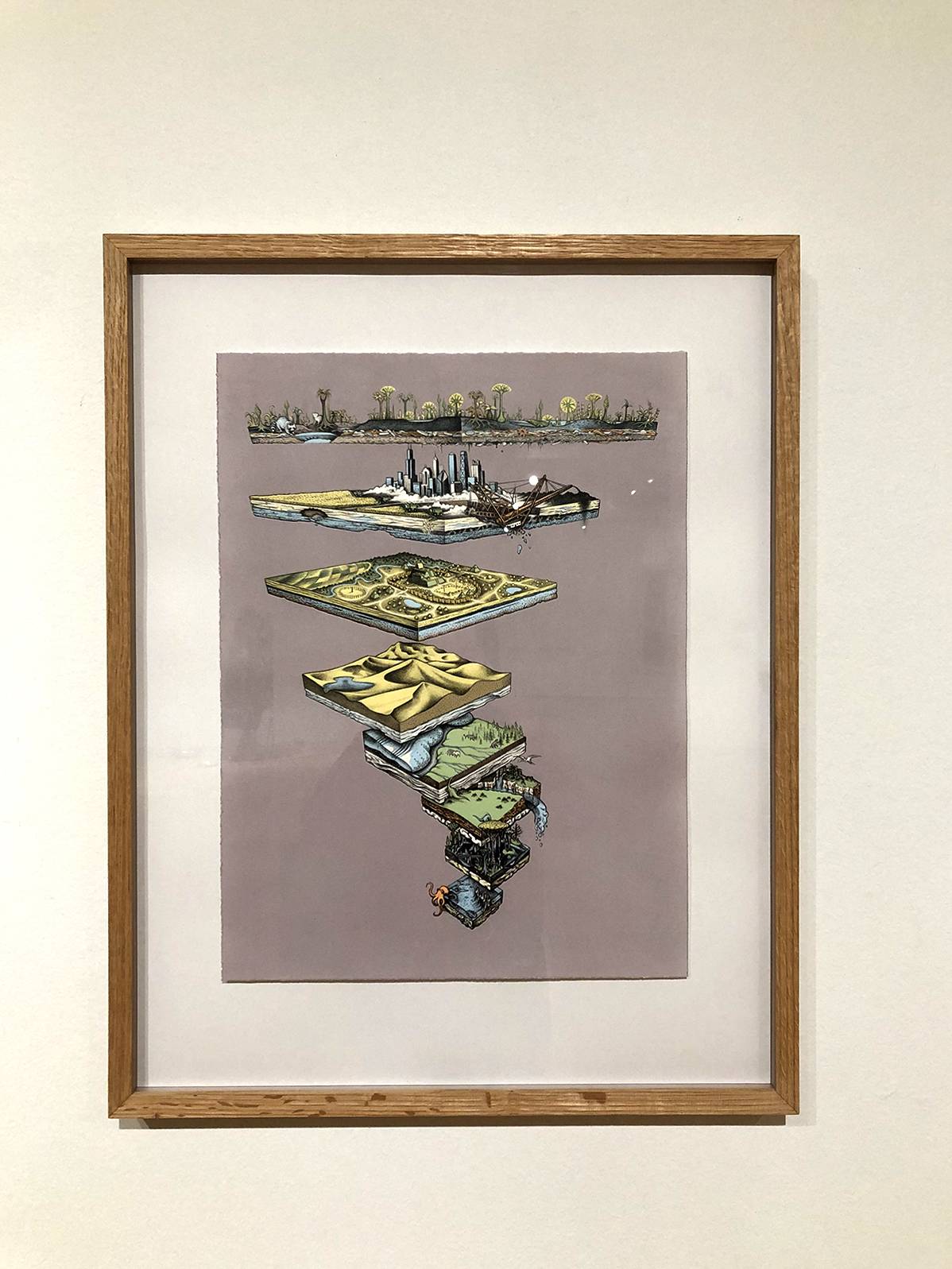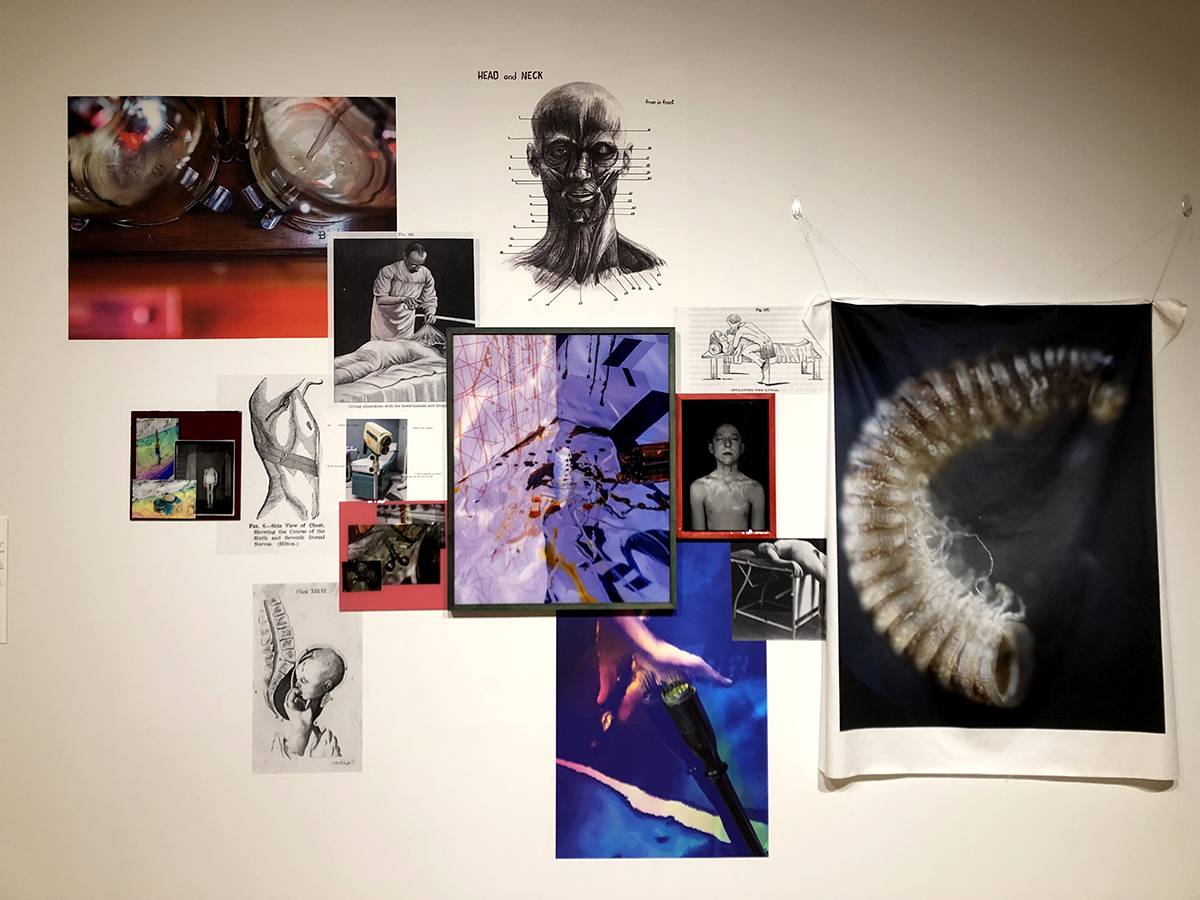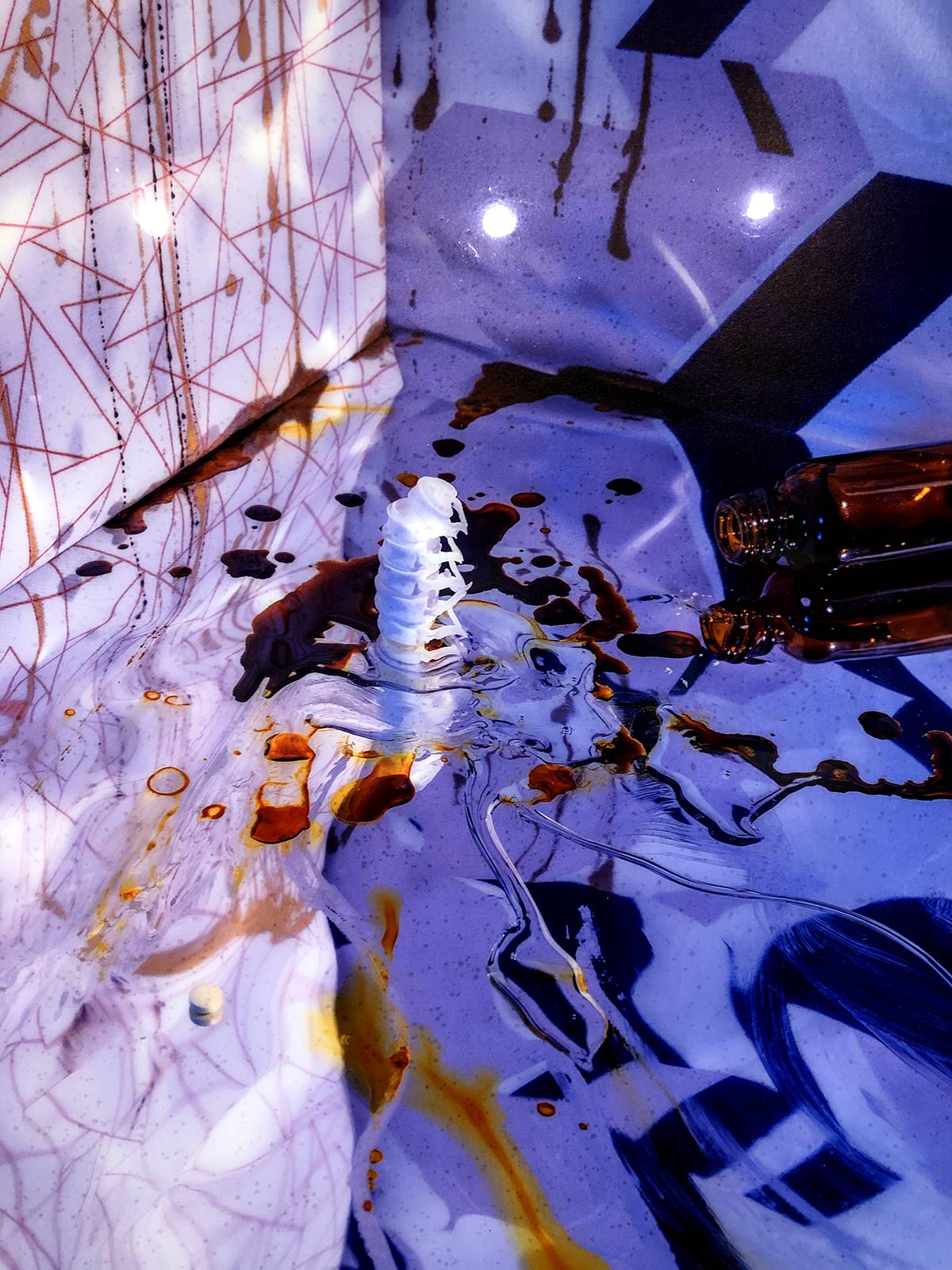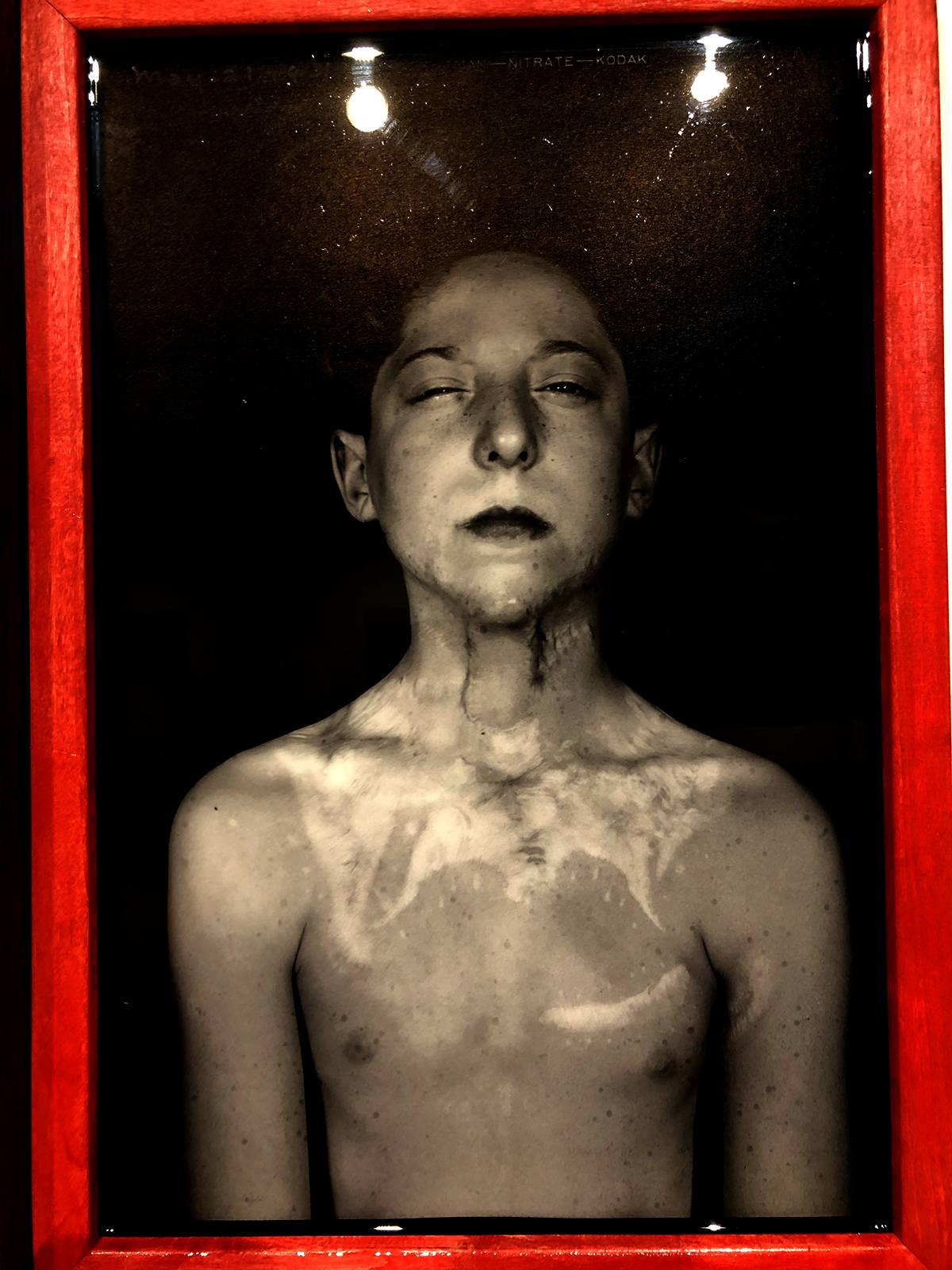
Last Thursday, I visited the Art + Design Faculty Exhibition at the Krannert Art Museum. I was curious to see how it was curated. Upon entering the space the variety of mediums stood out to me. The gallery was composed of a combination of sculpture, prints, painting and film. Melissa Pokorny’s sculptures promptly greeted gallery viewers. They were contrived of various textiles depicting scenes from nature and woven around large wire frames. I strolled around the forms and lost myself in each landscape. I enjoyed the harmony created by the green and blue colors, as well as the variety of organic shapes. It provoked my own reflection on the value nature and natural spaces hold for me.
This exhibition is a great opportunity to learn more about the faculty members at the School of Art and Design and to gain inspiration from their work. Several of my own professors have artwork in the show. Previously, I’ve only seen snippets of the projects they dedicate so much of their time to. Typically, I view their pieces on digital platforms, such as websites or social media. It was a different experience being able to interact with their work in person.
For the work that was familiar, it brought back some fond memories. Eric Benson’s and Mark Taylor’s (Fresh Press) “3-D Pulp: Crop Residue at Small and Large Scales, 2018-2019 “reminded me of the time I volunteered at Fresh Press and learned about the paper making process. Through Fresh Press Paper, Benson strives to “investigate hopeful regenerative materials and strategies to create in harmony with and to renourish the planet”. Benson is very passionate about his mission to create environmentally friendly paper. His dedication inspires me to become more environmentally aware. I recently purchased ten sheets of Fresh Press Artisan Agricultural Paper made from prairie grass and I am enthusiastic about using it to create my own artwork.

(Emmy Lingscheit, Occupied, 2019)
Another piece that resonated with me was Emmy Lingscheit’s “Occupied 2019.” I’ve seen pieces by Lingscheit before in the printmaking studio and the Link Gallery. Their intricate large scale prints never fail to amaze me. This lithograph with screenprint was both visually and mentally striking. Lingscheit successfully encapsulated the history of the land mass, known as Illinois. Their research, which influenced this artwork, focused on “the billions of years of growth, change, and extinction of life here.” This is evident in each segment of the land, beginning with the sea life on the bottom. Then the land changes and evolves from forest to glacier, sand dunes, farm land, and city. The top level is what Lingscheit envisions for the future of Illinois.
Lingscheit’s “Tools of Refusal, 2019” was also very memorable for me. This piece was composed of screenprinted messages, among which “There are no jobs on a dead planet” and “Climate Crisis: Not a partisan issue” were handed out during the FAA Climate Strike, earlier this semester. The strike unified a large group of students and faculty while promoting Environmental Activism. I find it fitting that I could encounter these prints during my museum visit.

(Steven Hudson, Better Angels, 2019)
Walking into the second room, I was taken aback by Steven Hudson’s “Better Angels, 2019.” The red orange background glowed, creating a hallow effect around the five deer, the subjects of this work. The sheer size of this piece was fascinating. The canvas was roughly five feet tall. I immediately imagined the amount of labor that went into fabricating a painting of this magnitude. Each section was extremely detailed, the bottom corner including adhered elements that enhanced Hudson’s message. The deer, representing the viewer, are trapped within “corporate sin, political treachery, and the fires of neglect and malice”.

(Rachel Fein-Smolinski, Post Operative Portrait, 1931, reproduced 2019)


(Rachel Fein-Smolinski, Post Operative Portrait, 1931, reproduced 2019)
Rachel Fein-Smolinski’s “Post Operative Portrait, 1931, reproduced 2019” is a part of a larger body of work, “Sex Lives of Animals Without Backbones.” This piece was fascinating because of the way it was visually arranged. I’m used to museums displaying one piece of art at a time but this was a compilation of photographs, prints, and fabric. Interwoven together it tells the story of the western health care system and how “knowledge is produced, documented, and disseminated in favor of assuaging the pain of others. ” The rich colors and patterns within the purple and blue photograph resemble a broken body, with a single part of the spinal cord left standing. The photograph of the boy further forcers the viewer to analyze the anatomical form of another human being. This collection made me reflect upon how my own body has been at the mercy of the western health care system.
The Art + Design Faculty Exhibition inspired me with the various messages and mediums. A lot of work was related to nature and the environment, encouraging viewers to fight for our dying planet. Additionally, there were a lot of political statements or work geared towards making the viewer think more deeply about current events and pressing issues in our societal structure. Lastly, the exhibition made me think critically about what is considered art. Many of these pieces were projects that are meant to inspire action and activism. It was inspirational to see these mediums in a gallery setting. I left Krannert Art Museum feeling as if I understood my professors and their artistic labors more deeply.
Illinois Art + Design Faculty Exhibition
Krannert Art Museum
500 E Peabody, Champaign
Open through December 7th
Photos by Apolonia Wielgus








